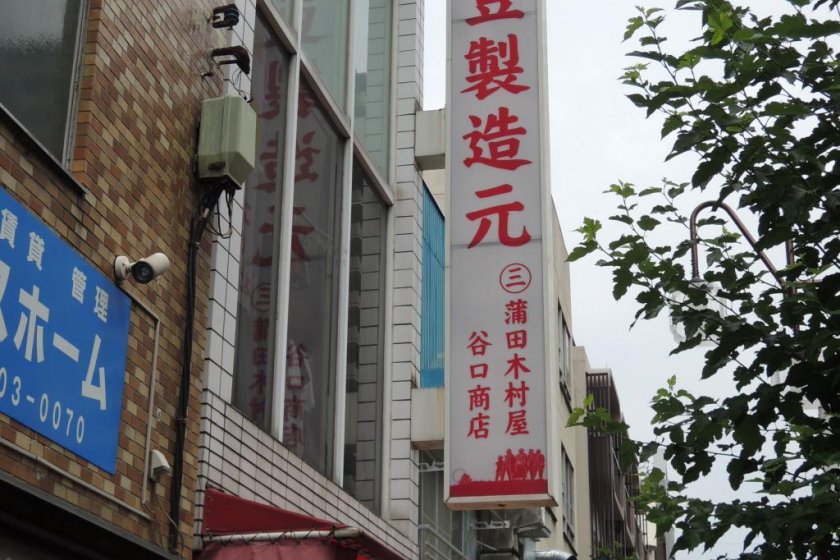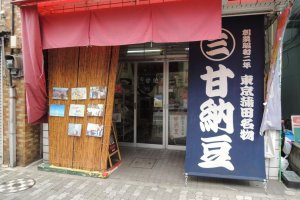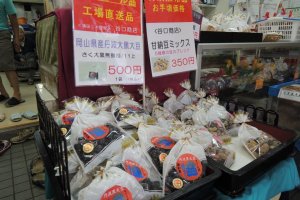Natto is a love or hate food especially for foreigners. I’ve met people who loved it from the beginning, hated it at first but gradually came to like it, and those that still hate it. I stay in the Oakhouse Kamata 260 and came across an ama-natto store 15 minutes away on foot called Kamata Taniguchi Shouten. For those that hate natto, rest assured, this is not the typical natto. In fact, it tastes nothing like it. The store I found specialized in selling sweet-glazed natto or ama-natto. When I first heard the name, I thought it was a mixture of the original stinkiness and an added sweetness of sugar. When imagining it this way, it sounds very repulsive.
Reluctant with the taste, I tried a sample of the ama-natto. The first impact is nothing like regular natto. The flavor was sweet but not the sweetness of western candies. It was more like a bitter sweet found in most Japanese candies. The peanut-sized beans were so good, I couldn’t stop eating them. I also imagined that ama-natto was made from soy beans like natto, but in fact there were a variety of beans used. There were mini beans smaller than corn and others that were the size of U.S. quarter coins. But then, a question crossed my mind. Why is ama-natto called natto in the first place? Well, traditionally, any kind of processed beans were considered natto. But to distinguish the difference, the sweeter ones were called ama-natto.
The store had an old Japanese style atmosphere and I enjoyed the conversation with the chef. The store was established in 1927 and the current chef is the third generation to inherit the skills. Interestingly, he went to university and studied abroad briefly at the University of California, Los Angeles, and upon graduating worked for a company. However, after the death of his father, he quit his job and continued the family tradition. If you can speak Japanese, I recommend having a conversation with him because he is humorous and you can tell he is happy to have someone to converse with.
Upon entering, you notice several pictures on the right. The photos were those of Japanese media and celebrities coming to the store. Television stars and crew from famous Japanese TV programs including Adomachi Tengoku and Chii Sanpo have visited the place.
The chef is more than willing to cooperate and easily agreed to let me take photos. In fact, he led me to his kitchen and explained the procedures of how the ama-natto is prepared. If you’re used to the early morning, you can negotiate with Taniguchi-san to request to see the actual cooking process which he does every weekend.
Watching Taniguchi-san handle ama-natto is truly a vision of Japanese traditional cooking techniques. Even if you are not staying in Kamata, visiting the Kamata Taniguchi Shouten is a worthwhile and unique experience. Even though its different from traditional natto, you can impress your Japanese friends for having tried "natto."
































